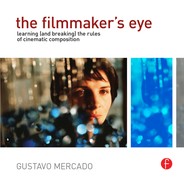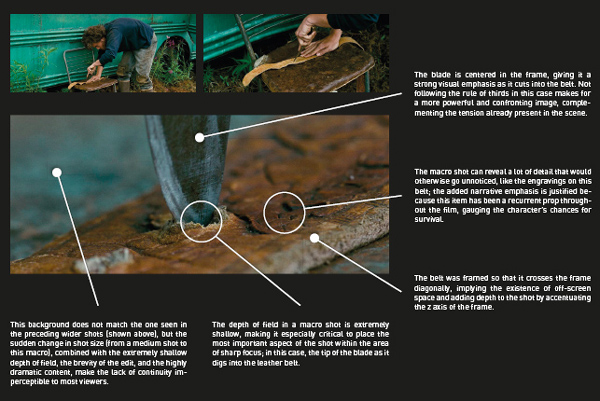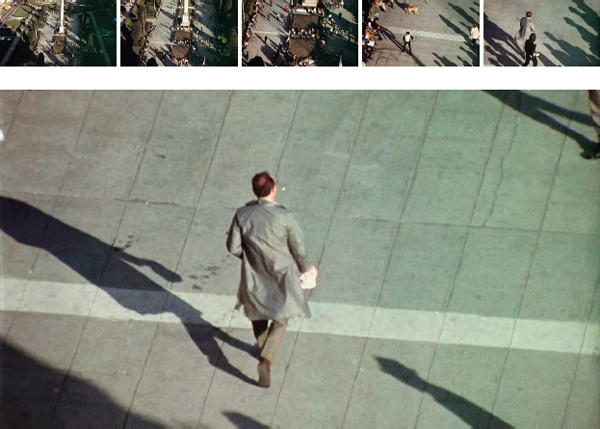macro shot
All macro shots are extreme close ups, but not all extreme close ups are macro shots. The difference lies in the amount of magnification of the image. For instance, while you might be able to get a very tight close up of an eye using a prime lens, you will not be able to get closer than the nearest depth of field limit for the shortest focusing distance that the lens allows, normally about 12 inches. A macro lens is a specialized lens designed to work at extremely close focusing distances, and will let you get much closer (2 inches or less), resulting in a huge image of the eye in the frame. This makes macro shots ideal to capture extremely small details of characters and objects. Like extreme close ups and close ups, the closeness of macro shots can add a strong visual emphasis to a subject that generates certain expectations regarding its narrative significance (as per Hitchcock’s rule), so their use should be justified at some point in the story; for instance, a macro shot can be used to showcase an object whose importance is unknown when first presented, but is later revealed. Another common use involves editing a macro shot at the end of a series of shots of a subject that get increasingly tighter, conveying an increasing sense of tension or importance. The high level of magnification macro shots are capable of also lets you showcase textures and patterns that are so small in real life that in some cases they become completely unrecognizable to audiences when shown blown up, making them ideal for abstract shots that do not have a direct plot function, but are nonetheless integral to the image system of a film. Sometimes, the graphic qualities of a macro shot is used to generate a question in the minds of the audience, by showing them an abstract shot they can not identify at first, to then cut to a series of increasingly wider shots that finally reveal the subject. Because of their unique technical requirements, macro shots have the common feature of having an extremely shallow depth of field, which will severely restrict any movement by the subject in the frame.
Darren Aronofsky uses macro shots in his film Requiem for a Dream (2000) as part of mini-montages that encapsulate the experience of being under the influence of psychotropic drugs. In these visually arresting images, macro shots of pupils dilating (shot in time lapse) are combined with other extreme close ups of dollar bills, increased blood flow through a vein, various drugs in powder form being set up for consumption, and an imaginative sound design. The use of macro shots in these montages cleverly allow the filmmaker to present the audience with images that they are familiar with that look unusual because of their high degree of magnification, creating a visual metaphor for the heightened perception of a drug user’s experience. Macro shots are technically difficult to accomplish, but can provide you with memorable, visually striking images with a level of detail that no other shot can show.
Darren Aronofsky’s Requiem For A Dream (2000) uses a series of recurrent macro shots of pupils dilating in highly stylized montages that visualize the effects of psychotropic drug usage. Only a macro shot is capable of capturing this high degree of magnification.
macro shot
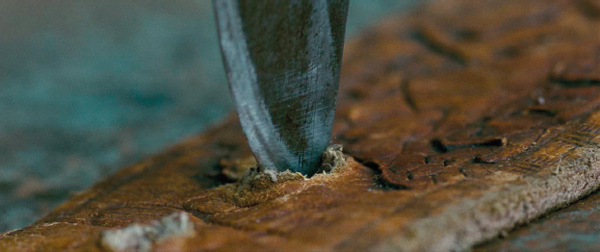
why it works
Macro shots capture extremely small details of a subject, revealing textures and features even an extreme close up cannot show. The closeness of this shot can make even mundane objects, actions, or details of characters visually interesting, while the emphasis it provides generates the expectation that what is shown is narratively important and meaningful to the story. An example of this is seen in Sean Penn’s visually stunning Into the Wild (2007), a film that follows the plight of Chris McCandless (Emile Hirsch) as he struggles to survive the harsh Alaskan wilderness. Throughout the film, we see him carve extra holes into his belt as his situation worsens and he physically wastes away. With every extra hole he carves, we are shown increasingly tighter shots of the knife cutting into the leather. Appropriately, the last hole he makes takes on a monumental significance because it is shown with a macro shot, making it impossible to get any closer while conveying the impending doom that follows not too long after this shot is shown.
technical considerations
lenses
The options available to create these shots will depend on your shooting format; there is a wide selection of macro lenses available for 16mm and 35mm film, while prosumer HD formats have close-up lenses, diopters, and wide angle converters that attach directly to the native lens of the camera. If shooting HD with a 35mm lens adapter kit, you will also have many macro lenses designed for still photography at your disposal. You should be aware, however, that not every lens that can be used for macro cinematography will yield the same results. Depending on the needs of your shot, especially in terms of image quality and degree of magnification, you might want to use a macro lens designed specifically for that purpose instead of the cheaper alternatives (such as close up lenses, wide angle converters, and diopters). Another benefit of using an actual macro lens is that they have barrel markings that indicate the level of magnification (“1:1,” for instance, denotes that the size of the subject in the frame will match its size in real life; “1:2” means the image captured will be half the actual size, etc.) as well as the focusing distance, making exposure calculations much simpler. Since these shots involve an extremely short camera to subject distance, the resulting depth of field will invariably be so extremely shallow that is often confined to a plane instead of a region, making focusing very difficult, especially if there is even the tiniest movement by the subject. One way to alleviate this situation is by extending the depth of field through the use of smaller apertures, as explained in the next column.
format
If shooting with a prosumer HD camera, you should be prepared to have enough lighting to let you get deeper depths of field, since you cannot increase the sensitivity of a CCD sensor (unless you are willing to compromise image quality by engaging the gain mode), and you will lose a lot of light with the extra glass in front of your native lens, especially if the macro lens will be added to an existing 35mm lens adapter kit. Less expensive, consumer-grade HD cameras have an advantage since many come with a built-in macro mode; when engaged, it allows focusing on subjects that are almost touching the lens, saving you the expense of having to rent or purchase a macro lens adapter or a wide angle converter. The downside of using these cameras is that their HD formats have a lot of compression, and in some cases are cumbersome or even impossible to edit with some NLE (non-linear editing) systems without first transcoding to a different format. Having a large preview monitor to confirm the focus of macro shots is almost a necessity, since most on-board LCD screens are simply too small for this purpose.
lighting
In some cases, the depth of field in macro shots is so shallow it cannot be measured as a range, but only as a total. Because of this, even the slightest movement from either the subject or the camera can throw an image out of focus. The only way to ameliorate this situation is to increase the depth of field as much as possible by closing down the aperture, which can only be done if additional lights are added to prevent underexposing the image. Keep in mind that even with extra lights, the resulting depth of field will still be very shallow, but even a small increase in the depth of field will make it easier to get a usable image. It is also important to remember that the closeness of the camera to the subject can result in the lens casting a shadow over the subject, restricting your placement of lighting fixtures; in this case, diffused sources of light will work best, and there are also specialized “ring lights” that can be fitted right on the lens and provide soft, diffused light that can solve this problem.
breaking the rules
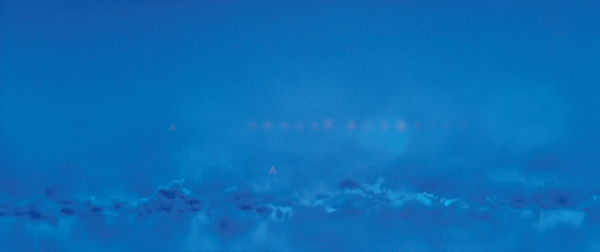
The imaginative opening credit sequence in Andrew Niccol’s Gattaca (1997) uses a series of macro shots of clipped fingernails, shaved hair, and dried skin flakes falling in slow motion, establishing their importance in a world where even the smallest organic trace can be used to identify people who were not genetically engineered before birth and therefore considered “invalids.” Some of the shots, however, are not macros at all; large plastic props made to look like skin flakes and shot at 360 frames per second were used to simulate them instead, creating a more visually compelling image than what could have been done with a macro lens. The use of an extremely shallow depth of field makes the shot indistinguishable from the rest of the real macros used in the sequence.
The Conversation. Francis Ford Coppola, 1974.
